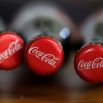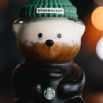A small independent research group has figured out how to give humans night vision, allowing them to see over 50 meters in total darkness for several hours as reported in Science Alert.
A group of biohackers called Science for the Masses based in Tehachapi, California thought of enhancing healthy eyesight enough that it can possess night vision. The key to this is natural, light-sensitive substance called Chlorin e6, (Ce6), which comes from deep sea creatures. It has been used for many years in cancer treatment research.
This substance is also seen as an effective treatment of night blindness and improving dim light vision in people suffering from eye disorders. Thus, leading to the research by the self-described biohackers in California.
"Going off that research, we thought this would be something to move ahead with," the lab's medical officer, Jeffrey Tibbetts, told Max Plenke at Mic. "There are a fair amount of papers talking about having it injected in models like rats, and it's been used intravenously since the '60s as a treatment for different cancers. After doing the research, you have to take the next step."
The team biochem researcher Gabriel Licina stepped forward to become a human guinea pig. The team explained the procedure on their website:
"For the application, the subject rested supine and his eyes were flushed with saline to remove any micro-debris or contaminants that might be present. Eyes were pinned open with a small speculum to remove the potential for blinking, which may force excess liquid out before it had a chance to absorb. Ce6 solution was added to the conjunctival sac via micropippette at 3 doses of 50μl into each eye.
After each application, pressure was applied to the canthus to stop liquid from moving from the eye to the nasal region. Each dose was allowed to absorb between reloading the pippette, with the black colour disappearing after only a few seconds.
After application was complete, the speculum was removed and black sclera lenses were placed into each eye to reduce the potential light entering the eye. Black sunglasses were then worn during all but testing, to ensure increased low light conditions and reduce the potential for bright light exposure."
Licina and four controls were placed in a dark room. After about an hour, he started to make out the shapes of objects in the darkness, 10 meters away. As time passes, it progressed to 20 and eventually just over 50 metres. Licina was able to identify symbols and objects such as numbers, letters and shapes moving against coloured and patterned backgrounds. Even into the woods at night, Licina was able to spot people standing in random locations 50 metres away.
The researchers admit that a lot more testing needs to be done. They believe that this can be done cheaply since substances are inexpensive. This newly discovered night vision can lead to fascinating discoveries. Do you like this article? Don't forget to share on Facebook!
© copyright 2024 Food World News, a property of HNGN Inc. All rights reserved. Use of this website constitutes acceptance of our terms and conditions of use and privacy policy.









